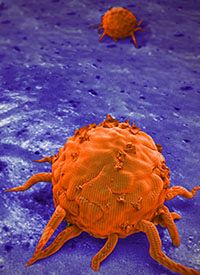Article
Surgery Plus Neoadjuvant Therapy Improves Survival in Margin-Positive Pancreatic Cancer
Author(s):
Surgical resection demonstrated a notable survival benefit, particularly in combination with neoadjuvant therapy, in patients with aggressive margin-positive pancreatic cancer.

Surgical resection demonstrated a notable survival benefit, particularly in combination with neoadjuvant therapy, in patients with aggressive margin-positive pancreatic cancer, according to data from an analysis published in the Journal of the American College of Surgeons.1
Results from the analysis indicated that patients who received R1 and R2 surgical resection experienced a better overall survival (OS) vs those who received chemotherapy alone. Patients who underwent R1/R2 resection and neoadjuvant therapy experienced the best median OS of 19.75 months (95% CI, 17.91-22.28) vs 16.92 months with up-front surgery (95% CI, 16.03-17.81) and 9.04 months with chemotherapy alone (95% CI, 8.87-9.26).
After adjusting for Inverse Probability of Treatment Weights, patients in the neoadjuvant therapy and surgery cohort continued to experience the best OS (hazard ratio [HR], 0.54) of all groups, including the up-front surgery cohort (HR, 0.46), with all survival differences achieving statistical significance (P <.0001).
When examining outcomes for the propensity-matched groups, patients who received chemotherapy alone continued to experience the worst OS vs the R1 and R2 surgical cohorts. Patients who had R1 and R2 resection and received neoadjuvant therapy experienced a median OS of 19.75 months (HR, 0.28; 95% CI, 17.91-22.28) vs 19.84 months with up-front surgery (HR, 0.29; 95% CI, 17.94-21.59) or 9.76 months with chemotherapy alone (95% CI, 8.54-10.35; P <.0001).
Although approximately 10% to 30% of patients with pancreatic cancer present with resectable or borderline resectable disease, recurrence is still common following disease resection.2,3 Currently, optimal disease management includes combining surgical resection with chemotherapy in the neoadjuvant or adjuvant settings. Margin status continues to be one of the most notable predictors of survival following surgery, with patients undergoing R0 resection experiencing improved survival. Higher R0 resection rates are cited as a potential benefit of neoadjuvant therapy.
Previous findings from a study comparing outcomes of patients who have undergone palliative double bypass vs pancreaticoduodenectomy with positive resection margins showed that R1/R2 resection was associated with improved survival. However, OS was poor, even in these patients; the 2-year survival rate was 15.8%.4 Adjuvant therapy with 5-fluorouracil and leucovorin was linked with better survival with both approaches.
Investigators utilized the National Cancer Database for the current analysis, which accounts for 75% of all newly diagnosed cases of cancer in the United States.5 The analysis evaluated a subset of patients with locally advanced pancreatic adenocarcinoma or borderline resectable pancreatic adenocarcinoma. The study was limited to include patients with stage II disease.
Patients who had received chemotherapy alone without surgical intervention, as well as those who underwent neoadjuvant chemotherapy with or without radiation, followed by surgery or up-front surgery with or without adjuvant chemotherapy or chemoradiation.
Patients who had received intraoperative radiation or neoadjuvant radiation without chemotherapy were excluded from the analysis.
A total of 56,187 patients with stage II pancreatic cancer were identified between 2010 and 2015; 11,699 met the criteria for inclusion. Additionally, 16,129 patients who had received R0 resections were not included in the analysis. Of these, 81.4% received chemotherapy alone and 18.6% underwent surgical resection and had positive margins. Within the surgical cohort (n = 1836), 84.3% of patients received surgery up front and 15.7% (n = 342) received neoadjuvant therapy followed by surgery. A total of 9521 patients were included in the chemotherapy-only cohort.
The mean age in the chemotherapy-alone group was 69.95 ± 11.56 years vs 65.30 ± 10.82 years in those who underwent up-front surgery, and 63.21 ± 10.08 years in those who were given neoadjuvant therapy (P <.001). Most patients across all 3 groups were White and male. Those in the surgical groups were more likely to be male, White, to be privately insured, to live in the northeast or Midwest regions, and to have a higher income than the chemotherapy-alone group. Patients in the chemotherapy group were more likely to have larger tumors and less likely to have a pancreatic head tumor vs those in the surgical group.
Investigators examined R1 and R2 resections individually on the study.
“Although the number of R2 resections is significantly less than R1 resections, there was no overall differences in either the unadjusted HR or adjusted HR in our surgical subsets,” the authors of the analysis wrote. “An [unmatched] subset analysis was then performed to look at survival of patients with lymph node–positive disease based on treatment. As anticipated, when compared with lymph node–negative only patients, all median survivals of lymph node–positive patients per treatment group were lower.”
The investigators concluded that R1 resection benefitted patients over chemotherapy alone and achieved better survival than those who did not receive surgery—especially those who received neoadjuvant therapy.
References
- Arrington AK, Hsu C-H, Schaefer KL, et al. Survival after margin-positive resection in the era of modern chemotherapy for pancreatic cancer: do patients still benefit? J Am Coll Surg. 2021;233(1):100-109. doi:10.1016/j.jamcollsurg.2021.02.020
- Siegel RL, Miller KD, Jemal A. Cancer statistics, 2019. CA Cancer J Clin. 2019;69(1):7-34. doi:10.3322/caac.21551
- Rahib L, Smith BD, Aizenberg R, et al. Projecting cancer incidence and deaths to 2030: the unexpected burden of thyroid, liver, and pancreas cancers in the United States. Cancer Res. 2014;74(11):2913-2921. doi:10.1158/0008-5472.CAN-14-0155
- Lilliemoe KD, Cameron JL, Yeo CJ, et al. Pancreaticoduodenectomy. Does it have a role in the palliation of pancreatic cancer? Ann Surg. 1996;223(6):718-725. doi:10.1097/00000658-199606000-00010
- National Cancer Database. American College of Surgeons. Accessed April 19, 2021. https://bit.ly/2Q73fKh





%20(2)%201-Recovered-Recovered-Recovered-Recovered-Recovered.jpg?fit=crop&auto=format)

%20(2)%201-Recovered-Recovered-Recovered-Recovered-Recovered.jpg?fit=crop&auto=format)
%20(2)%201-Recovered-Recovered-Recovered-Recovered-Recovered.jpg?fit=crop&auto=format)